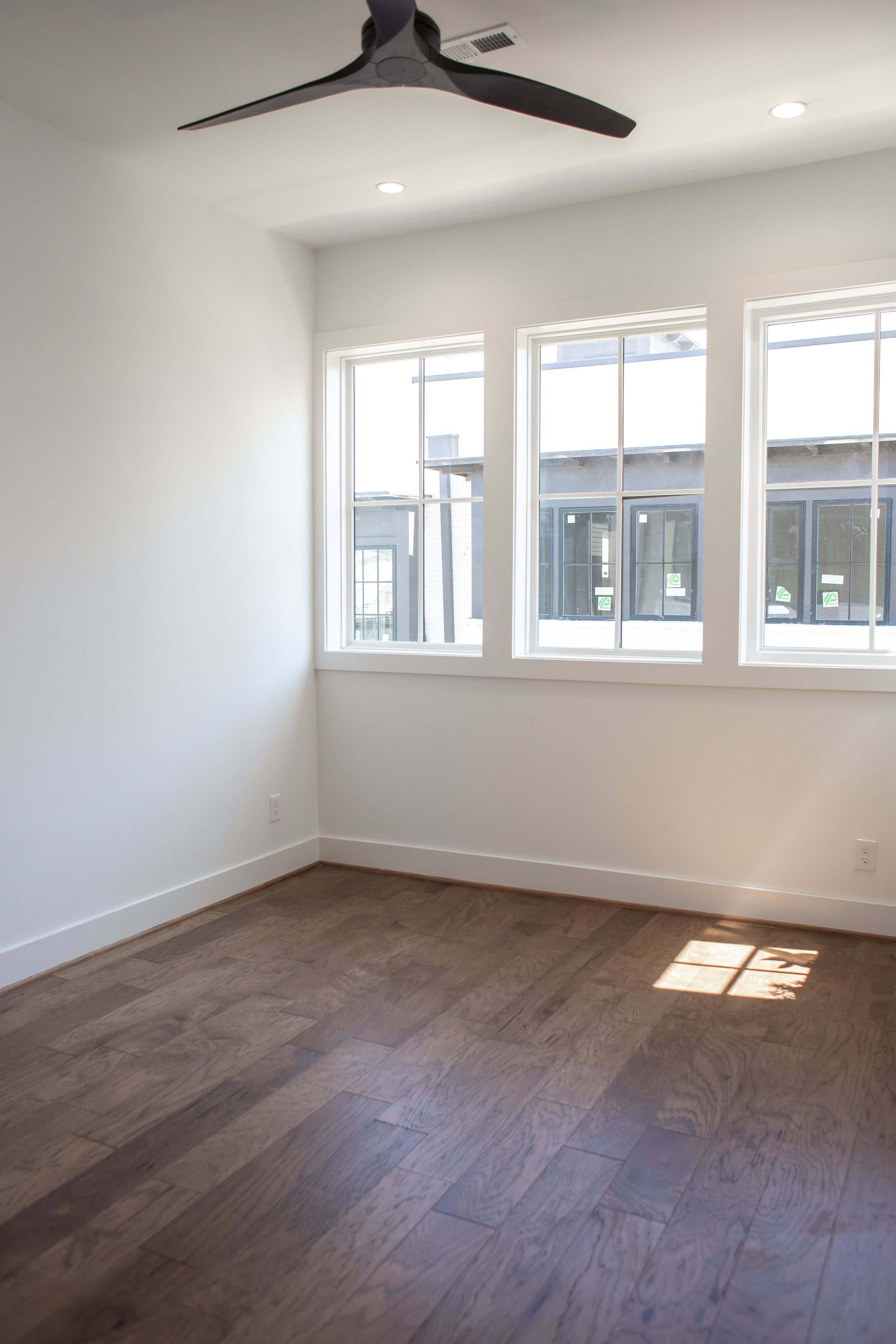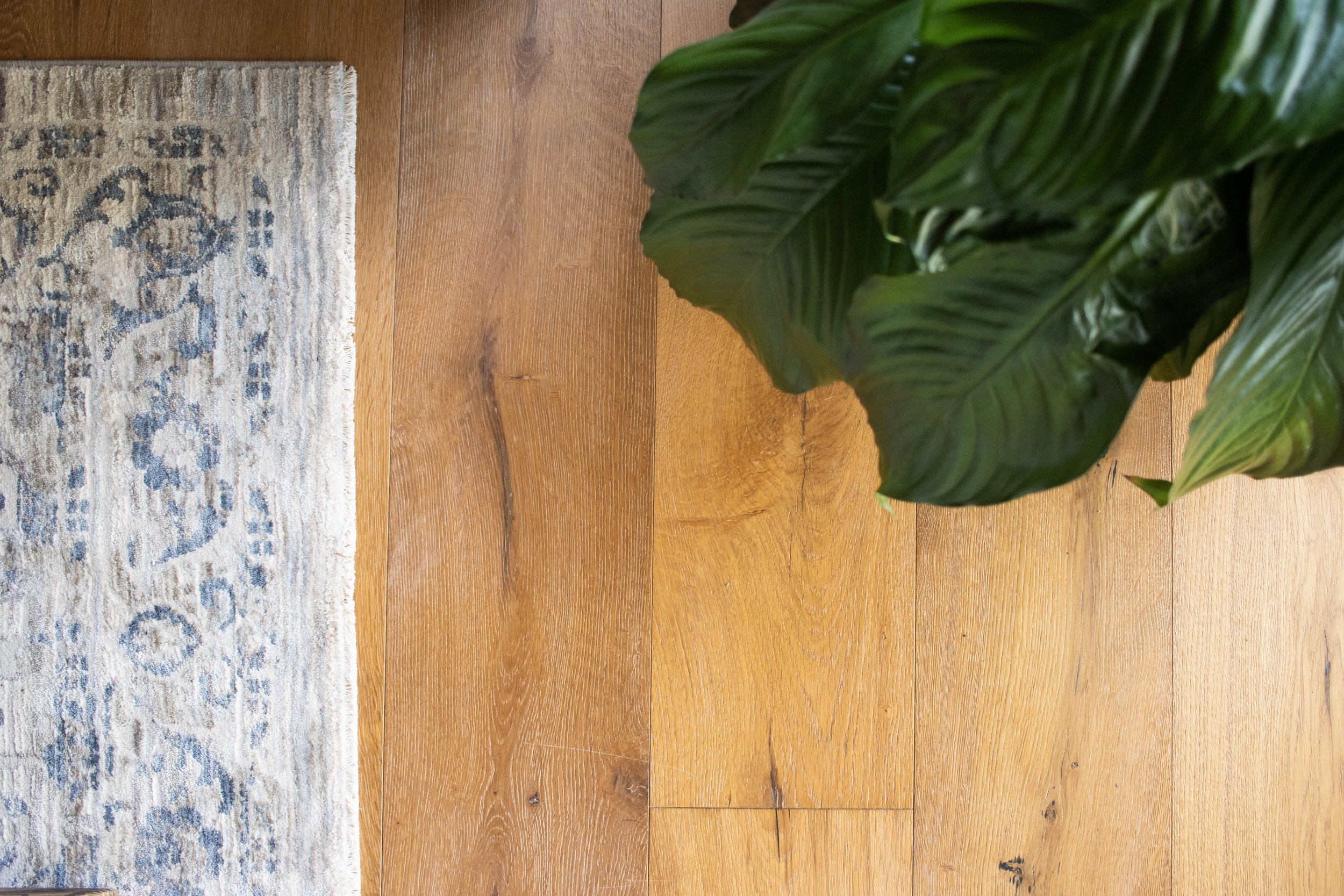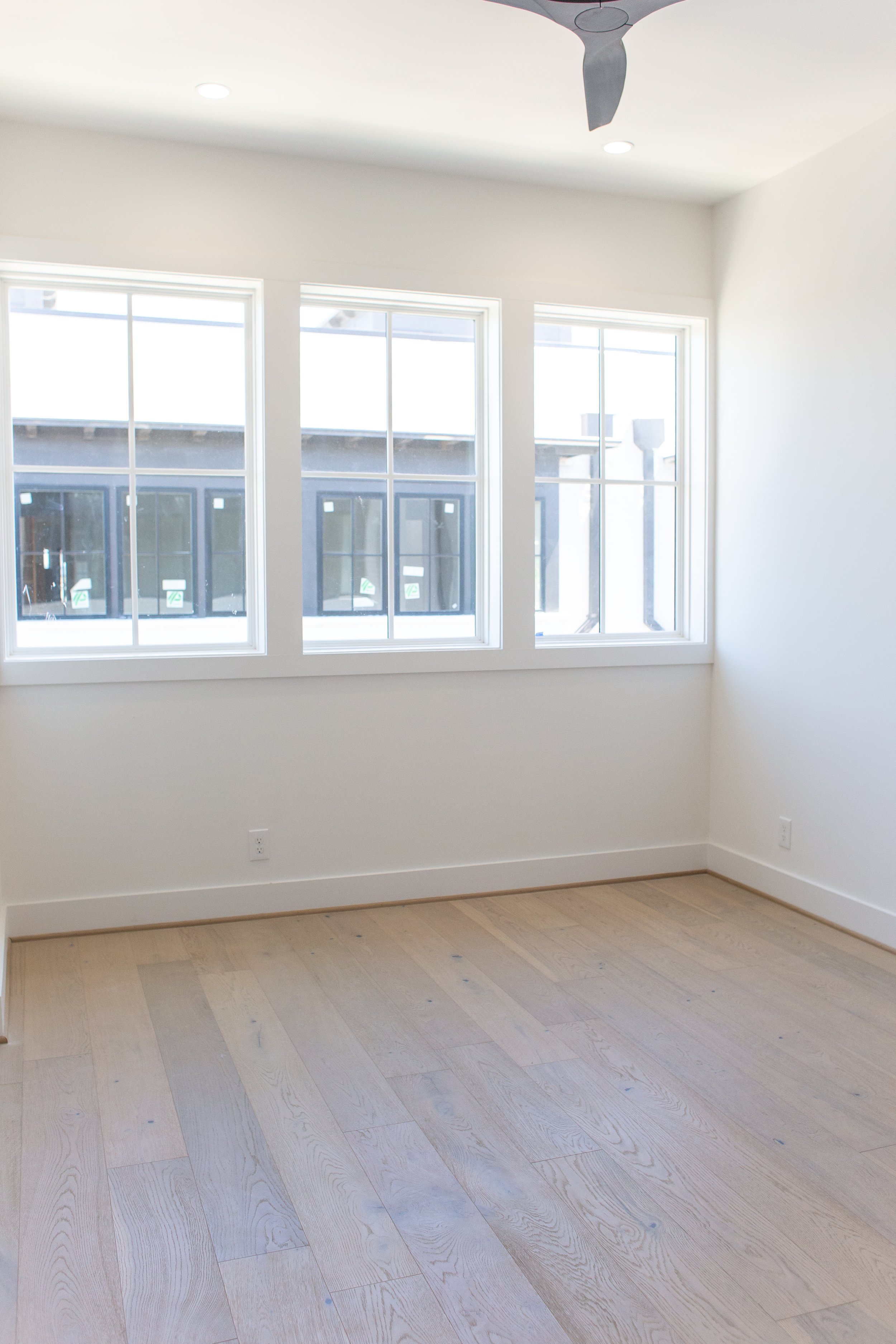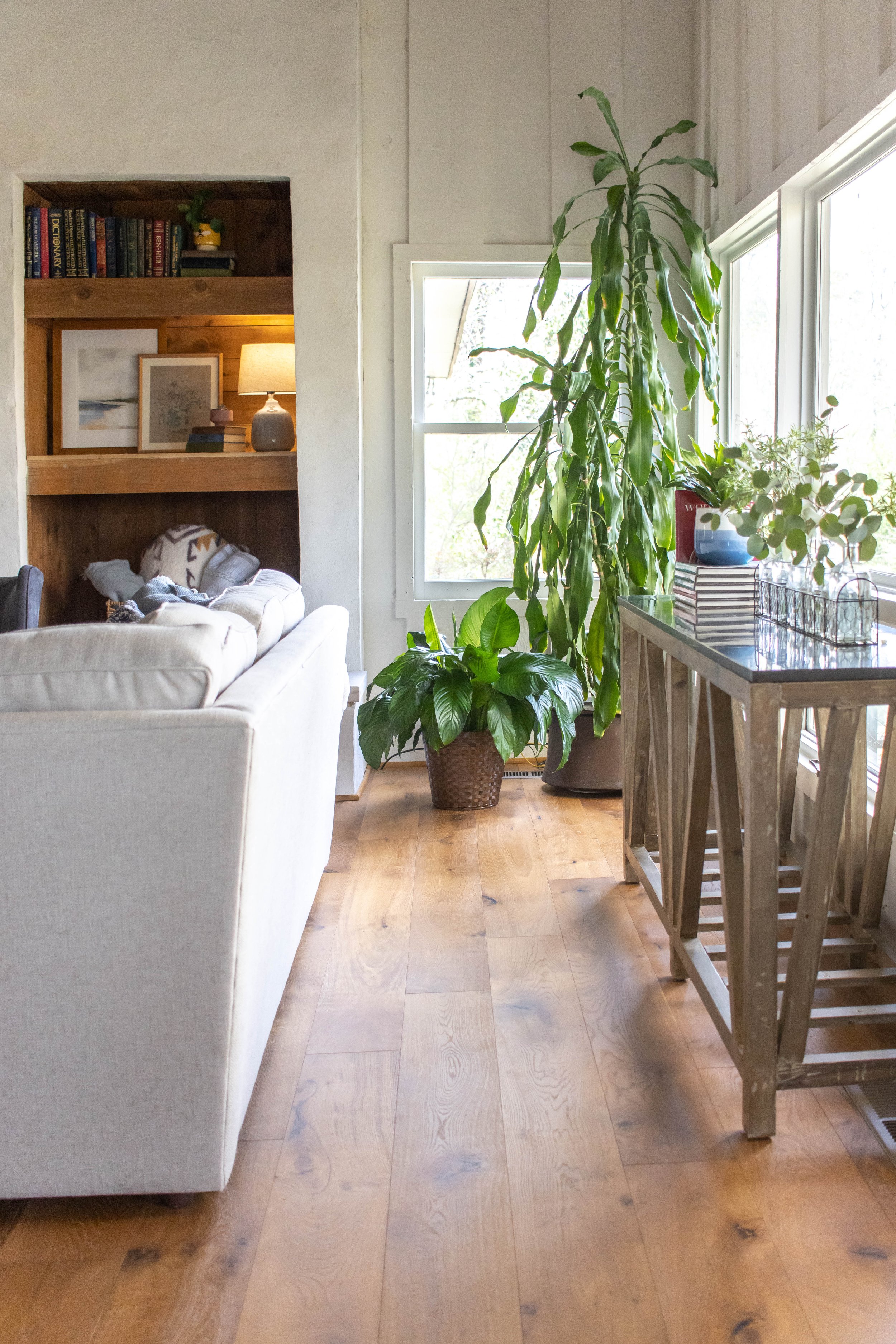Engineered Hardwood Flooring
Hardwood flooring has always been considered the cream of the crop as a residential flooring choice. It has the ability to give an elegant, timeless and natural look for your home. In more recent years, Engineered hardwood flooring has become increasingly popular as an alternative to traditional solid hardwood flooring. We’ll be sharing a few reasons why we love engineered hardwood flooring!
When choosing between a solid hardwood and an engineered hardwood, there are a couple of things to consider.
One of the biggest advantages of solid hardwood flooring is the flexibility to refinish it years later by updating the stain color or finish (high sheen vs. low sheen). You can also make repairs like buffing out scuffs or scratches.
However, sanding and finishing your floors can be a very disruptive process. The sanding process creates a large amount of dust, and can take a few days for the stain to cure.
If you live in an area with high moisture, or were ever to have a moisture problem in your home, solid wood can be prone to warping or buckling. Attempting to spot fix a few boards is possible, but it can be very difficult to match a stain and sheen of a floor that has been installed for years. This could mean having to sand and finish an entire room or area to get the new wood to blend in.
In recent years, many people have found engineered hardwood very attractive because it shares a similar appearance to solid hardwood, but cuts out some of the hassle that comes with solid hardwood installation and is also made to be more preventative against warping.
The most common type of engineered hardwood is prefinished by a manufacturer. This means installation can be much quicker and less dusty. If spot fixing is ever required, homeowners may have extra pieces of flooring from installation that would match the finish and sheen of the rest of the wood. You can also typically order more of the same wood for other areas of the home to match in later projects.
While solid hardwood is made of one solid piece of wood with a tongue and groove side, engineered hardwood is made of several layers of ply with a wood veneer on top. The multiple layers of plywood create excellent strength and durability beneath the surface. The strength of the layers helps to prevent any water or moisture that comes from below from getting through to the surface of the wood.
Depending on your space, installing solid hardwood flooring may or may not always be feasible. For any areas that are above ground level, you have the flexibility to install a solid hardwood or an engineered hardwood. This includes any home that has a crawl space or any upper level floors in a home. The wood subfloor on above-ground levels allows you to nail down or glue down your hardwood. Areas that are on ground level or have a concrete subfloor make installing solid hardwood much more difficult. In this case, engineered wood floors are a great option because they do not have to be nailed down.
Typically, engineered hardwood is more cost-effective due to lower material cost and installation costs. In addition, engineered hardwood comes in many shapes, sizes, and colors to fit any style. Stop by our Pelham, Hoover, or Tuscaloosa locations to see our selection of beautiful engineered hardwoods and get started on your next project!







